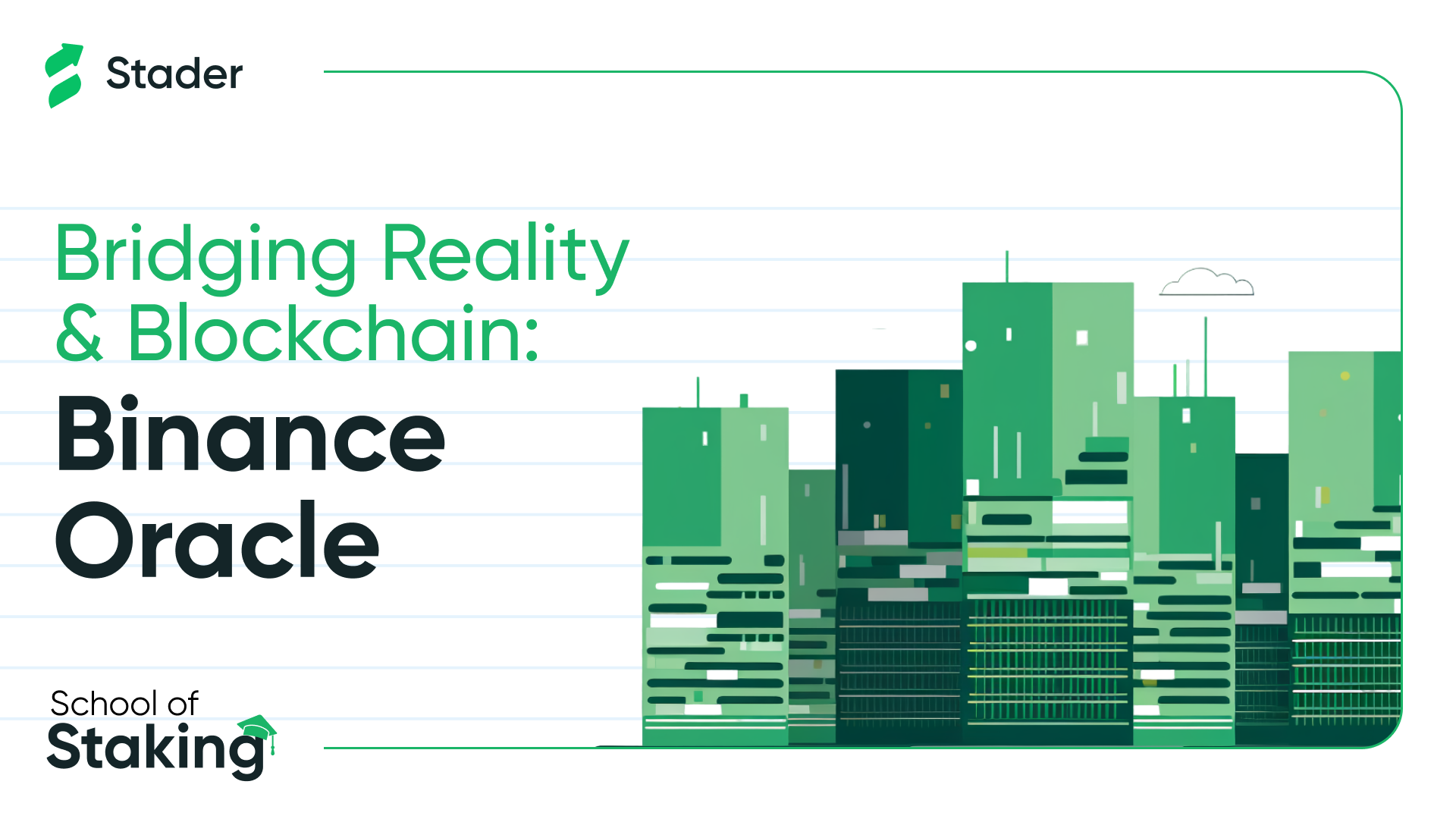Binance Oracle: The Data Bridge

Introduction
When it comes to the bustling world of blockchain, the Binance Smart Chain (BNB Chain) holds a distinctive place with its robust ecosystem. Binance Oracle, a key player in this network, is a fascinating innovation that establishes a seamless connection between on-chain applications and off-chain data. Serving as a bridge to this digital divide, Binance Oracle adds a fresh dimension of functionality and practicality to the BNB Chain.
The Role of Oracles in Blockchain
Before delving into the nuts and bolts of Binance Oracle, it's essential to understand why oracles hold such significance in the realm of blockchain technology. Essentially, oracles are data feeders that supply critical, real-time information to smart contracts, which inherently lack access to external data. From stock prices to sports outcomes, they provide a wide array of data, effectively serving as the "eyes and ears" of smart contracts.
Binance Oracle: A Unique Proposition
What sets Binance Oracle apart from its counterparts is its tailored design to work flawlessly with the BNB Chain. It provides not just any data, but verified, secure, and reliable on-chain data, effectively streamlining the interaction between BNB Chain-based projects and the outside world. This not only broadens the horizons for existing projects but also opens doors for exciting new developments.
A Boon to the Ecosystem
The presence of a native oracle like Binance Oracle within the BNB Chain ensures the ready availability of trustworthy data. It fosters an environment conducive to innovation, enabling developers to push boundaries and explore new possibilities. Moreover, it relieves developers of the burdensome task of connecting to off-chain data, allowing them to direct their focus on other crucial aspects of their projects.
Four Pillars of Binance Oracle
The effectiveness of Binance Oracle hinges on four vital elements: data sources, processing and signing, publishing, and monitoring.
- Data Sources: Binance Oracle aggregates data from a range of trusted centralized exchanges and DeFi applications, ensuring the information's accuracy.
- Processing & Signing: In the next step, the data undergoes processing and signing, which authenticates it and renders it tamper-proof.
- Publishing: Once authenticated, the data is published to the blockchain. This task is carried out by multi-nodes on Binance Oracle that publish only signed information, ensuring the data's security and adaptability to market conditions.
- Monitoring: The last step involves round-the-clock monitoring of the data. An independent service keeps a vigilant eye on the data, intervening whenever it detects significant deviation between the data sources and published data.
Integration with Binance Oracle: A Walk in the Park
For blockchain developers, the incorporation of Binance Oracle into their projects is made simple with the help of an official manual. This step-by-step guide facilitates a seamless integration process, further elevating the appeal of this dynamic tool.
Conclusion: Bridging the Gap
Without oracles like Binance Oracle, blockchains would be constrained to their internal data. However, with its capability to import off-chain data on-chain, Binance Oracle transforms this limitation into an opportunity. It not only brings real-world data into the blockchain but also ensures its consistency and security. In doing so, Binance Oracle effectively bridges the gap between blockchains and real-world information, contributing significantly to the broader adoption of blockchain technology.